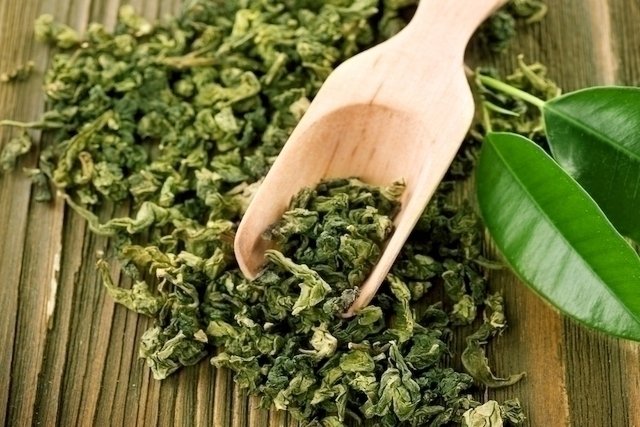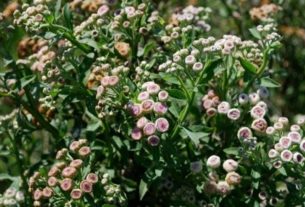Some home remedies such as green tea, ginger tea or quixaba tea can help in the treatment of ovarian cysts, as they contain substances with anti-inflammatory, antioxidant or analgesic action, which help reduce pain and inflammation in the ovary. or to regulate the menstrual cycle.
Furthermore, these home remedies, when used regularly, help alleviate typical symptoms of ovarian cysts such as colic, nausea, vomiting or a bloated belly. See other symptoms of ovarian cyst.
It is important to emphasize that these home remedies for ovarian cysts can only be used to complement the treatment indicated by the doctor, which normally includes the use of contraceptive pills, in some cases, surgery to remove the cysts.

1. Quixaba tea
Quixaba tea, prepared with the plant of the species Sideroxylon obtusifoliumis rich in flavonoids and phenolic compounds with anti-inflammatory, antioxidant and analgesic action, helping to reduce inflammation and pain caused by ovarian cysts.
Ingredients
- 1 tablespoon of quixaba peel;
- 500 ml of water.
Preparation mode
Place the quixaba peel in the water and bring to a boil. After boiling, let it cool, strain and drink up to 2 cups of tea per day.
This home remedy for ovarian cysts is contraindicated for insulin-dependent diabetic women, as quixaba causes a decrease in blood sugar levels and can cause a hypoglycemia crisis.
2. Green tea
Some studies show that green tea, scientifically known as Camellia sinensishas phenolic compounds in its composition, such as epigallocatechin, which has antioxidant and anti-inflammatory properties, helping to reduce inflammation in the ovary and damage caused by free radicals in ovarian cells, being a good home remedy to help treat cysts in the ovary.
Furthermore, drinking green tea can help improve female hormone levels, reduce insulin resistance and help you lose weight, which can be very useful, especially for polycystic ovary syndrome. Understand better what polycystic ovary syndrome is and what causes it.
Green tea can be used in the form of teas, infusions or natural extract, and should be used under the guidance of a gynecologist as excessive use can harm the liver.
Ingredients
- 1 teaspoon of green tea leaves or 1 green tea bag;
- 1 cup of boiling water.
Preparation mode
Add the leaves or green tea bag to the cup of boiling water and let it steep for 10 minutes. Strain or remove the sachet and drink immediately. This tea can be consumed 3 to 4 times a day, or as advised by your doctor.
Green tea should not be consumed by children, pregnant or breastfeeding women, or those who have insomnia, hyperthyroidism, gastritis or high blood pressure. Furthermore, as it contains caffeine in its composition, you should avoid drinking this tea at the end of the day or in quantities greater than recommended as it can cause side effects such as insomnia, irritation, a burning sensation in the stomach, tiredness or heart palpitations.
3. Ginger tea
Ginger, scientifically called Zinger officinalishas phenolic compounds, especially gingerol, which has antioxidant, anti-inflammatory and immunomodulatory properties, being very useful for relieving the symptoms of bloated belly, nausea, vomiting or colic caused by ovarian cysts.
Ingredients
- 1 cm of ginger root, cut into slices or grated;
- 1 liter of boiling water.
Preparation mode
Bring the water to a boil and add the ginger. Let it boil for 5 to 10 minutes. Remove the ginger from the cup and drink the tea in 3 to 4 divided doses throughout the day.
Another option for making tea is to replace the root with 1 teaspoon of powdered ginger.
Ginger tea should be avoided by women who use anticoagulants such as warfarin or aspirin as it may increase the risk of bleeding or hemorrhage. Furthermore, women who are pregnant, close to giving birth or have a history of miscarriage, clotting problems or are at risk of bleeding should avoid using ginger tea.
4. St. Kitts herb tea
São Cristóvão herb tea, made with the plant of the species Cimicifuga racemosahas isoflavone and caffeic and salicylic acids, with anti-inflammatory, analgesic and antioxidant properties, which help to reduce colic caused by ovarian cysts and regulate the menstrual cycle.
Ingredients
- 1 teaspoon of dried St. Kitts herb root;
- 1 cup of boiling water.
Preparation mode
Place the dry root in a cup of boiling water and let it rest for 10 minutes. Strain and then drink 2 to 3 times a day, for a maximum period of 6 months to 1 year, as it can cause liver damage.
Saint Kitts herb tea should not be used by women who are pregnant, breastfeeding or taking anticoagulant medications. Furthermore, this tea should not be consumed by women who have been diagnosed with breast, uterine or ovarian cancer, heart problems such as arrhythmia, low blood pressure, liver problems or seizures.
This tea can interfere with the action of the contraceptive pill and can also cause side effects such as stomach pain, liver problems or the formation of bumps on the skin.

Sign up for our newsletter and stay up to date with exclusive news
that can transform your routine!
Warning: Undefined array key "title" in /home/storelat/public_html/wp-content/plugins/link-whisper-premium/templates/frontend/related-posts.php on line 12
Warning: Undefined array key "title_tag" in /home/storelat/public_html/wp-content/plugins/link-whisper-premium/templates/frontend/related-posts.php on line 13



